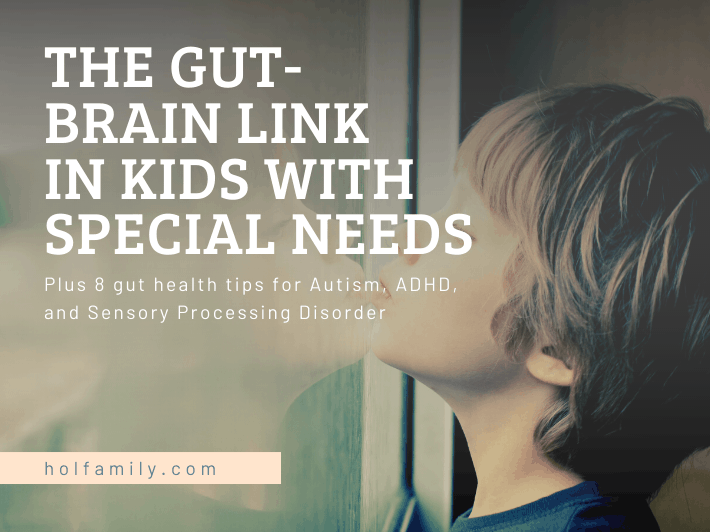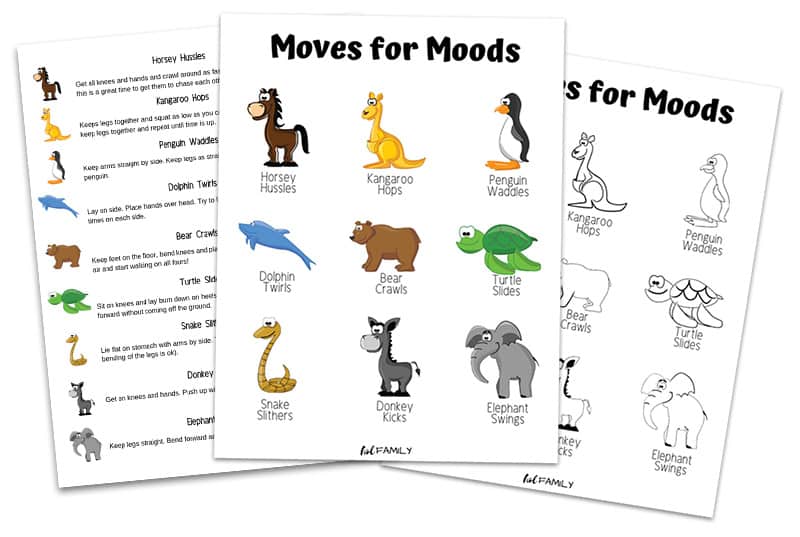
The clock read 4:59 AM, taunting me with the fact that I still had one solemn minute before it would begin its blaring BEEP BEEP BEEP. I often wake just before my alarm, but this time I could sense something different. As I blearily rubbed my eyes, adjusting to the dark, I realized there was a person staring straight at me…
Terrified, I sat straight up in bed, holding back a blood-curdling scream. Seconds later when I finally realized it was only my son, aged four at the time, my impending heart attack finally gave way to a more steady rhythm and I summoned my little guy over to me.
“What’s up, buddy?” I asked. “I’m too sick to go to school” he responded. This was supposed to be his first day of school, and he had been battling some major anxiety over this momentous occasion for weeks.
Although it would be two more years before he finally received a diagnosis of Autism, he was already battling sensory issues and anxiety that made entering new situations like school more challenging.
While going back to school can be an exciting time for many kids who look forward to seeing their friends again or just having an alternative to summer boredom, for children with sensory processing disorder (or any of its relatives like Autism, ADHD, etc.) school can be a scary and overwhelming place.
Many schools are incorporating sensory rooms or designated areas of the classroom where children can go to calm down or to work out some extra energy.
To give your little person the best start, it is important to prepare them ahead of time and develop an individual sensory diet based on their unique needs. Here are 8 back to school solutions for kids with sensory issues to help them thrive this next school year:
1) Morning Workout

One of the best AM routines is a morning workout. For years, I have set my clock for 5 AM in order to squeeze in an early morning run or to do one of my beloved Beach Body routines here at home. My oldest is also an early riser and often joins me for these workouts.
I began to notice that blowing off some steam first thing in the morning helped to regulate his behavior throughout the day. When this routine incorporated movements that crossed the midline (like touching the right hand to the left toe), the results were even better! Some sensory diets incorporate activities like heavy work, but I’ve personally experienced great results with this HIT animal workout for kids that my hubby created.
2) Books

This is one activity that can benefit children with or without sensory needs. Starting school for the first time or going into a new grade with unfamiliar faces can be a frightening experience for little people. I’ve always loved the power of reading stories for teaching new ideas and getting the mind ready for change.
There are endless options when it comes to books on starting school, going back to school, and even hilarious books like “How to Get Your Teacher Ready.” For kids with sensory needs, here are my top 3 favorite choices:
Decibella and Her 6-Inch Voice is a book all about communicating with confidence and how to use an appropriate volume.- I’m NOT just a Scribble This is a book about a Scribble who meets other drawings and realizes he is different. It is a book about inclusion without boundaries and is a must-read for every family.
- Listening to My Body is a book about helping kids to understand the connection between their sensations and feelings so they can learn important skills like self-regulation and emotional resilience.
3) Sensory Smart Outfits

Scratchy tags, itchy fabrics, and stiff jeans that make running feel 10x harder…these are often at the top of every sensory child’s list of “not so favorite things.” While every child’s needs are slightly different, parents can usually identify sensory issues related to clothing by kids that are constantly squirming in their outfits, who refuse to get dressed in the morning, or when your child returns to the same outfit day after day
Once you’ve identified your child’s no-no clothing list, you can begin shopping for a sensory-friendly wardrobe that you can both agree on. Cutting out tags is usually a big helper for kids, and choosing soft, breathable fabrics that allow kids the freedom to run and play is also important. SmartKnitKids is a company that makes seamless socks, undies, and even their famous superhero Compresso-T, a deep-pressure sensory compression undershirt.
4) Take-Along-Toy

While classrooms usually don’t allow children to bring toys (other than for special days or show-and-tell), most will make exceptions for items like fidget spinners, “
Some of the best “school friendly” options are those that can be worn so that you won’t have to worry about your little one losing their grounding item in the classroom. Chew necklaces, sensory bracelets, and acupressure rings can all be great choices.
6) Sensory Lunch and Snacks

I will never forget the day I called my son to the table for his favorite meal – hamburgers, only to have him explode in anger and tears when he sat down at the table. For whatever reason, he suddenly couldn’t handle seeing the ketchup touching the mustard. It took me almost 10 minutes just to calm him down long enough to figure out what the offending issue had been, but I learned an important lesson that day…thou shalt not serve thy son condiments that are touching.
It can be challenging if your child’s sensory issues around food change day-to-day, but getting their input is the best way to prevent any unexpected meltdowns and improve the likelihood that they will eat their lunch at school. While you may be reduced to sending the same lunch day after day, at least you will know your little person is actually eating and perhaps you can expand their food repertoire slowly over time.
7) Worry Stones

A worry stone is simply a smooth gemstone that is usually oval in shape and about the size of a thumb. They are used for rubbing between the thumb and finger to relieve stress and anxiety. Kids are typically fascinated by rocks (my son had a collection of rocks in his backpack by the end of kindergarten when I finally realized why his bag was getting heavier and heavier) and find holding this grounding item comforting.
These stones come in a variety of shapes and colors and can be painted or decorated with reassuring words. Another benefit of worry stones is that they stimulate reflexology points on the fingers and thumb that can help to relieve tension in the nervous system. One helpful tip if you plan to use worry stones with your child – be sure to buy or make a large number, to begin with…these small items tend to go missing or end up as gifts for all of your little person’s friends.
8) Calm Down Kit

Many classrooms are incorporating designated areas for kids who need to regulate their emotions or just have a few minutes alone. Often these spots are equipped with various tools including a calm down kit. We’ve talked before about the benefits of having a container full of sensory toys and items that can help children to refocus their emotions in our post about making a DIY Calm Down Kit.
Having a box filled with calming items like sensory toys, books on regulating emotions, stress balls, small musical instruments, and small candies or gum can be very helpful when kids are feeling overwhelmed or on the verge of a meltdown. This is often the place kids will go to immediately when they get home and need to de-regulate from the sensory downpour of a full day of school.
The Bottom Line
Whether your little person is starting school for the first time, or is returning after a short break over summer, helping them to prepare for the overwhelming sensory aspects of attending school is key for helping them succeed in the classroom. These are just 8 ideas to get you started, but be sure to read more about sensory issues in children and how to create a unique sensory diet for your child for even more helpful ideas.
How are you preparing your child with sensory needs to go back to school? Leave us a comment below and let us know!













